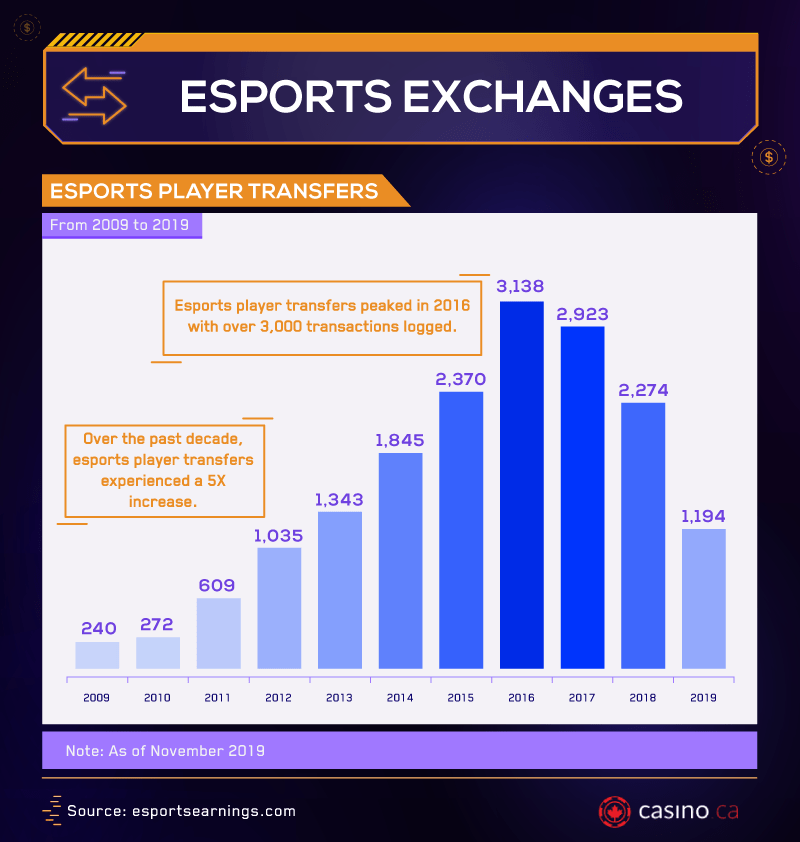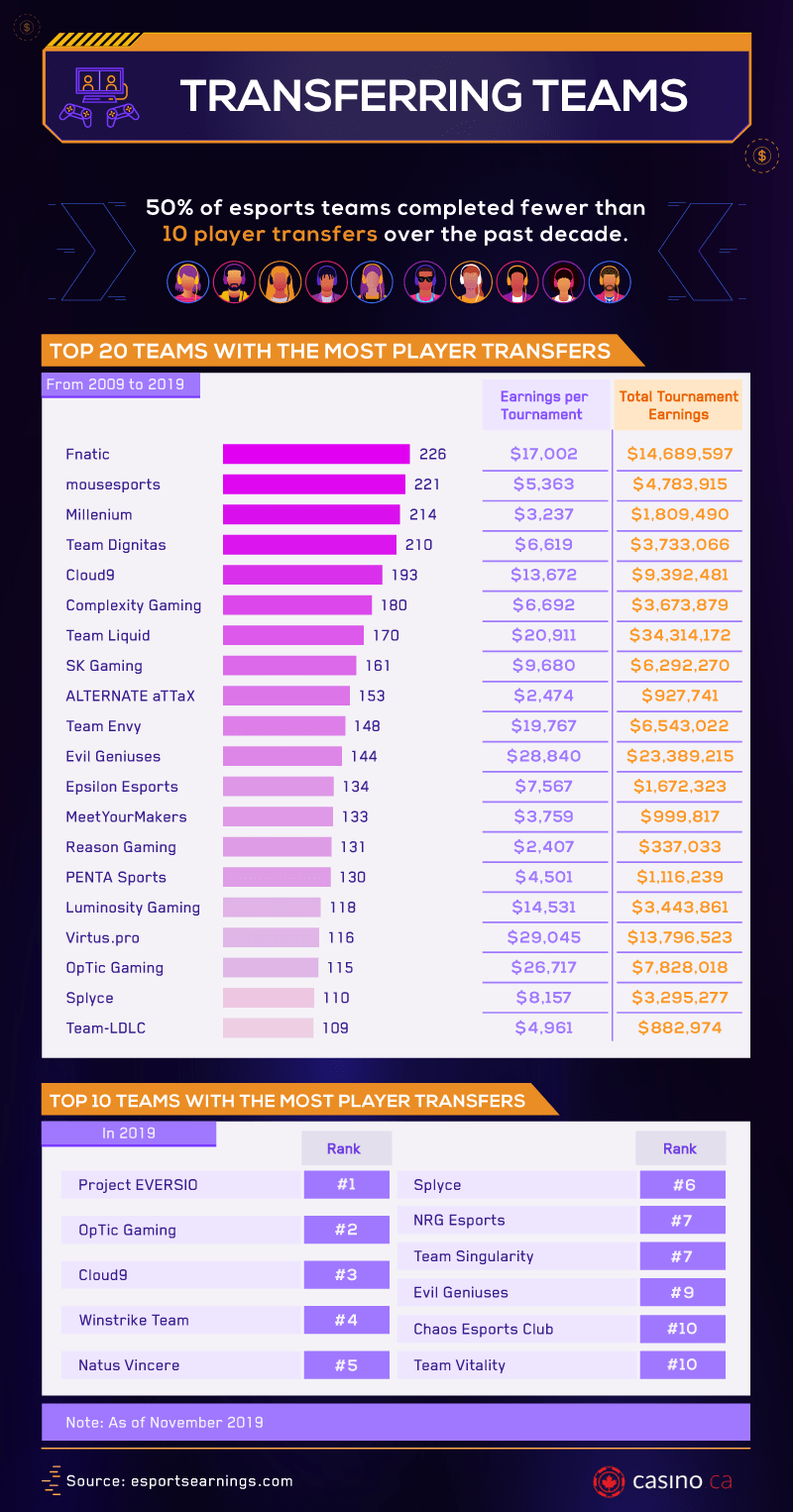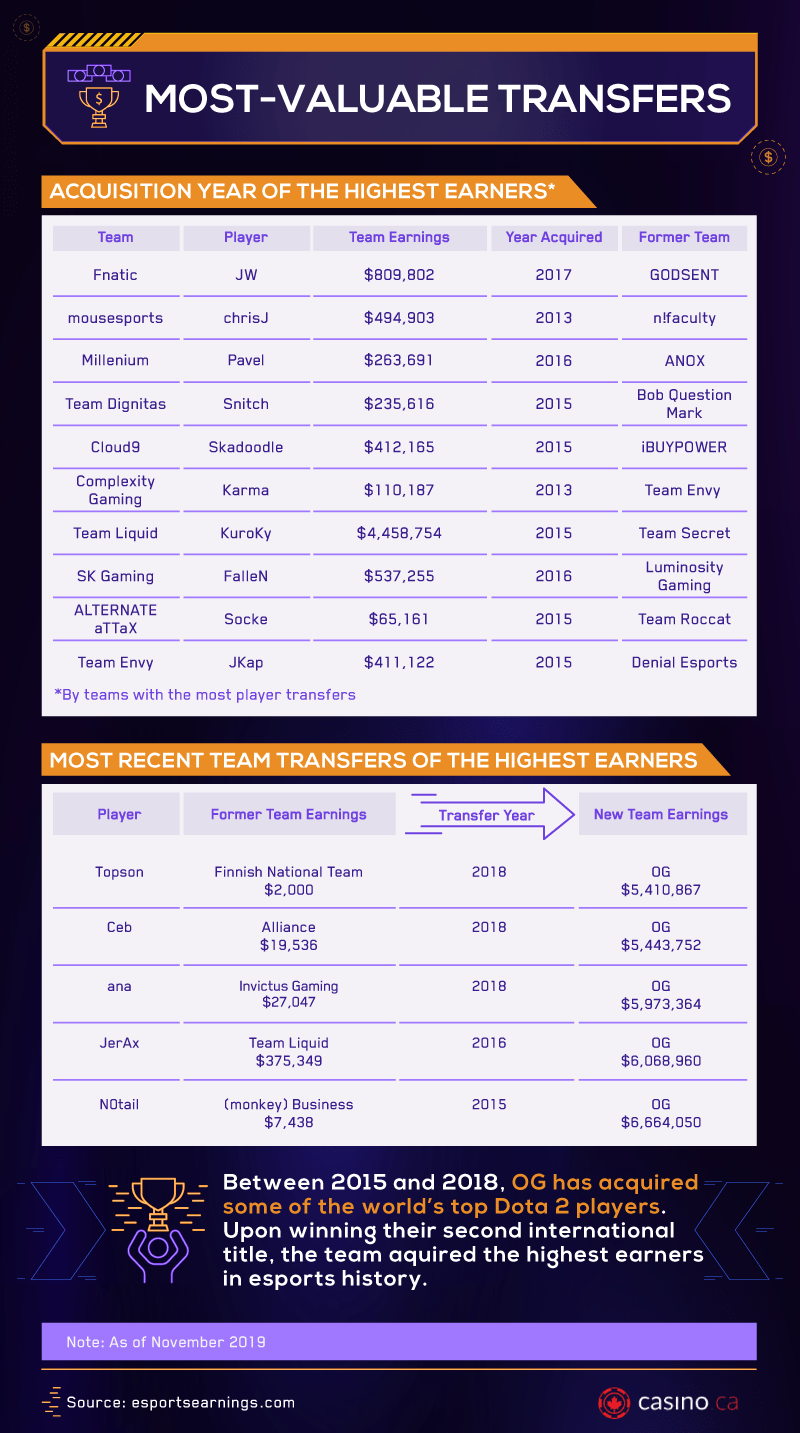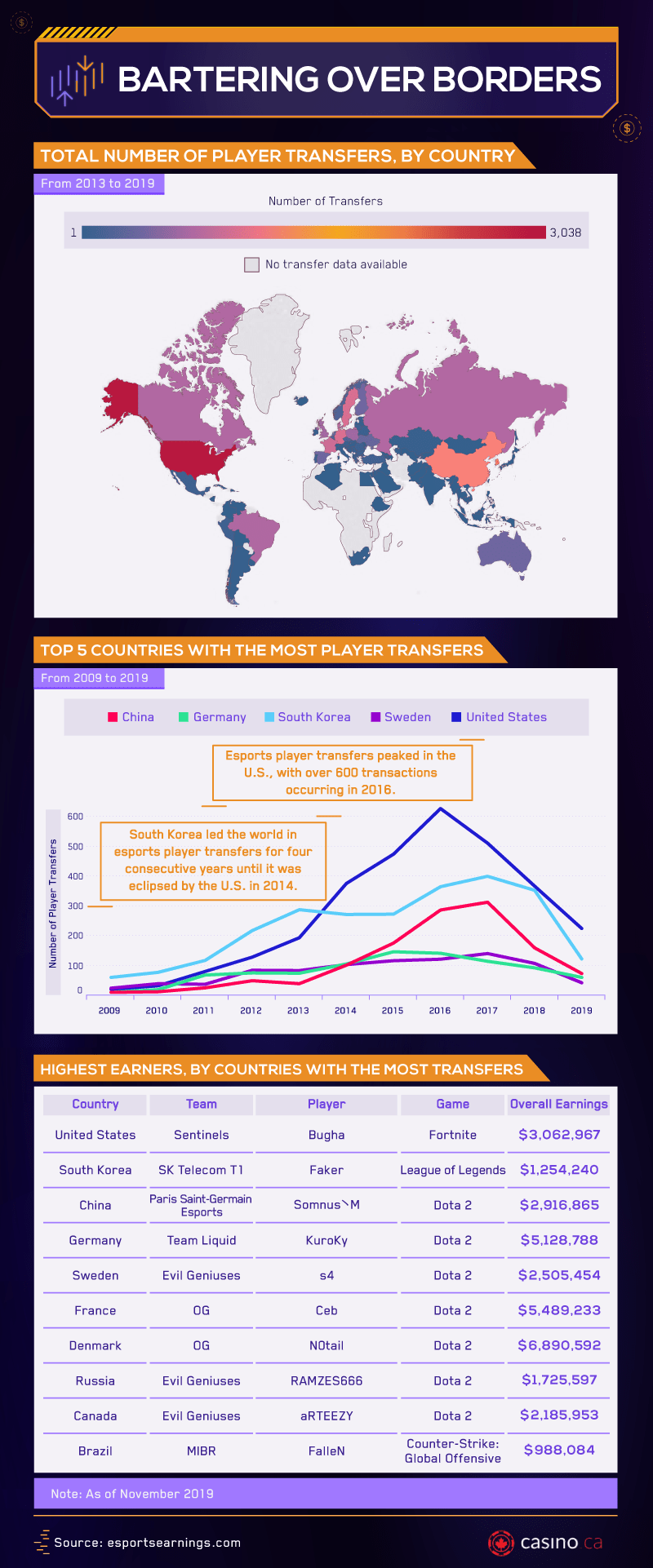We're 100% independent
Find the top Canadian online casinos
Get the biggest welcome bonuses

We're 100% independent
Find the top Canadian online casinos
Get the biggest welcome bonuses

The internet has generated some of the greatest riches the world has ever known. It even kick-started digital athletes, with some teams earning upward of $34 million. Esports, and the numbers and players behind it, will likely only continue to grow in popularity as video games become more competitive.
Using exhaustive esports player transfer data from esportsearnings.com, we were able to determine the monetary impact of prominent players, as well as the frequency of team transfers over the years. Continue reading to see the financial impact that competitive gaming has to reveal.
The past 10 years witnessed nearly a 400% increase in esports player transfers. In particular, trades peaked in 2016 when 3,138 transactions were logged. Interestingly, "more people watched the 2016 world finals of popular esports game League of Legends (43 million viewers) than the NBA Finals Game 7 that year (31 million viewers)."

These transfers, while numerous, can represent some incredible changes in esports, "characterized by the small distance between professional and amateur teams." It is possible for the top teams to invite nonprofessional players to compete or even join their group, taking into account the skills demonstrated in previous public games. So, the 3,138 trades in 2016, and the thousands occurring before and after, could mean the ascension to overnight stardom, perhaps some snap decisions, and of course, enormous financial impacts. Read on to see which teams took the most opportunities to trade players.
The top teams in terms of the number of players transferred were Fnatic, mousesports, and Millennium, with 226, 221, and 214 respective player trades since 2009. More trades, however, showed little correlation with each team's total tournament and per-tournament earnings. For instance, Fnatic had more trades than any other esports team, but they still earned less than teams like Team Liquid and Evil Geniuses, who ranked seventh and 11th for the overall number of trades.

During the 2019 season, specifically, Project EVERSIO made more trades than any other team. The team must be relatively new to trading, as they didn't appear among the top teams overall. Nevertheless, Project EVERSIO has won a host of lucrative tournaments, including the PlayCon ESL Community Cup and the Nova Series #5 - WESG Malta CSGO Qualifier.
OpTic Gaming ranked second for the most transfers completed in 2019 but also earned a spot among the top trading teams since 2009. Some commentators believe that OpTic Gaming's roster is "falling apart" and that they may need to watch out for rivals like Rise Nation, Team Kaliber, and Luminosity Gaming.
As we move into the specific players, we can look at which specific trades were best for the teams overall. Looking specifically at the teams with the most trades, we started with Fnatic, the No. 1 team for transfers. Their highest earner ever acquired was JW (Jesper Wecksell) in 2017, with team earnings of $809,802. Hailing from Sweden, Wecksell's game specialty is Counter-Strike: Global Offensive.

The gigantic sum of nearly $4.5 million that Team Liquid earned over time may have been due in part to its acquisition of KuroKy (Kuro Takhasomi). Takhasomi is a professional Dota 2 player and, as of November 2019, ranked sixth in the world, with an estimated $5.12 million earned in total prize money. On his own, Takhasomi is the 16th highest-paid esports player.
Next, we looked at the five highest earners and looked at their most recent individual trades. N0tail, having earned an estimated $6.89 million, was traded from (monkey) Business to OG in 2015. This means that N0tail went from a team earning just $7,438 to one that made $6,664,050. JerAx was traded from Team Liquid to OG as well, experiencing a $5,693,611 jump in team earnings from the trade.

A quick look at the map will tell you how many regions are involved in competitive gaming. A closer analysis, however, shows how feverishly the U.S. trades its esports players. Although South Korea had the U.S. beat for the number of esports trades from 2009 to 2013, the U.S. dethroned South Korea in 2014, peaking in 2016. Perhaps America's love of sports extends to its tendency to trade players, or perhaps it's inspired by a recent quote from Steve Borenstein, former CEO of ESPN and NFL Network and current chairman of Activision Blizzard's Esports Division:
"I believe esports will rival the biggest traditional sports leagues in terms of future opportunities, and between advertising, ticket sales, licensing, sponsorships and merchandising, there are tremendous growth areas for this nascent industry."
Overall, the top five countries trading esports players are as follows:
In China, there are esports organizations that unite several teams under one label. For example, PSG.LGD and LGD.Forever Young are both under the LGD label, and moves between such teams are one of the easiest ways to recruit players. Perhaps these groups are supporting the frequency of esports transfers we're seeing in China today.
If you're a fan of an esports team, a trade can feel personal and emotional, but as an investor or player, these transfers can translate into dollars and cents.
As the data revealed, however, these trades do seem to have slowed down. So, at least for the time being, players are likely to stay put. Nevertheless, dark horses will continue to emerge and be snatched from smaller teams, while larger teams may see some of their better players transferring to rival squads. In a world as fast-paced as esports, it's important to keep a close eye on the competition.
We collected data from esportsearnings.com about competitive gaming player transfers from January 2009 to December 2019. In addition to player transfers, the source provides prize money rankings and historical data over the past two decades. Due to the methods used to compile these data, not all player transactions were recorded. In some cases, either the former or new teams were listed as "NA," which, ultimately, may affect team and player rankings in the visualizations.
Esports is getting big. Perhaps even bigger than you guessed. You're welcome to share this industry news so long as it's for noncommercial purposes and you link back to this page.